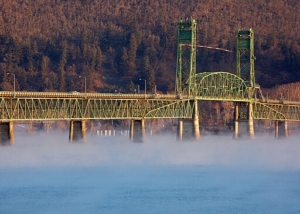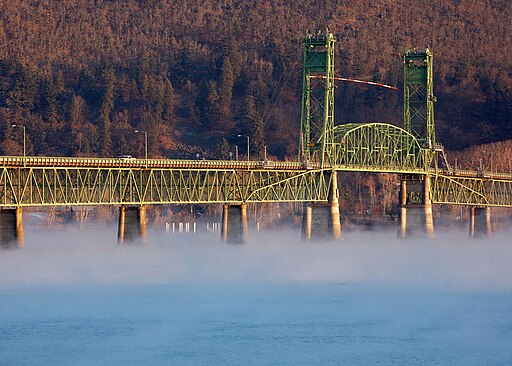Transportation systems nationwide are undergoing significant change. Emerging technologies and innovative mobility options are changing all modes of transportation, and soon both people and freight will be transported differently.
Intelligent transportation systems use sensors to monitor vehicles, control traffic flow, reduce congestion and improve safety. Some types of technology provide real-time data that is used to optimize transportation systems. Integrated community technology connects vehicles to systems so traffic signals can be manipulated. Its capabilities include redirecting traffic around wrecks on roadways.
Autonomous vehicles travel today on many roads throughout the U.S., and technology keeps them in certain lanes and alerts officials if there are problems. Digital signage that allow messages to be relayed in a moment’s notice is already obvious on major roads.
Federal spending on transportation innovation obviously plays a crucial role in shaping the future. Funding is available for research and development as government officials seek ways to make transportation in all forms more efficient, sustainable and safe. Airports are installing air taxis, EV charging stations and renewable energy options. Ferries are being modernized with technology to improve scheduling, safety and communication. The operating systems of ferries are being transformed to use renewable energy sources. Billions are available to public transit authorities, and technology is a critical component of every modernization project.
Officials at the Ohio Department of Transportation will soon begin a collaboration with the Washington County engineer’s office to launch a transportation technology project along two miles of State Route 7, a vital freight and logistics roadway. When the project is completed, the improved corridor will have better access management and other safety improvements. It will also be prepared for future deployment of connected and automated vehicle technology. A projected project cost of $14.6 million has been announced, and construction is scheduled for 2026 – with solicitations potentially released in 2025.

Photo courtesy of the Oregon Department of Transportation.
City leaders in Davis, California, will use cool pavement on 15 major roadways to mitigate the impacts of extreme heat and improve the city’s climate resilience. The total project cost is estimated at $29.99 million. Solar-reflective cool pavement materials that are primarily composed of concrete or asphalt with added reflective coatings will increase sunlight reflectivity, lowering surface temperatures by approximately 10-20 degrees. Cool pavement materials are permeable so water can pass through, promoting evaporation and enhancing cooling. Design work is currently underway, and construction is set for 2025.
Missouri’s Department of Transportation, in coordination with the Federal Highway Administration, will launch a transformative transportation project to modernize the Interstate 70 corridor throughout Missouri. The project will call for sensors and analytics as the roadway is prepared for vehicle connectivity. Sensors will soon communicate with intelligent transportation systems and provide data analytics. Additionally, the project will add a third lane of travel in both directions from Blue Springs to Wentzville. The pavement and bridges will be modernized, and improvements will be made to freight efficiency on the interstate. The total project cost is estimated at between $275-325 million. A design-build contract will be awarded in the spring of 2025.
A Maryland Transit Administration project will improve traffic signal technology throughout the state. Supported by a federal grant, the project will modernize traffic signals by incorporating advanced technologies that include adaptive signal control and real-time traffic monitoring. Traffic flow will be optimized, and congestion will be reduced as technology adjusts systems based on current traffic conditions. Project components will also include enhancing pedestrian safety by integrating smart crosswalk systems. Sensors will detect foot traffic and adjust signal timing accordingly.
An upcoming bridge replacement project will connect White Salmon, Washington, and Hood River, Oregon. A cost estimate of $500 million has been announced for the effort to deliver a new bridge with a dynamic Intelligent Transportation System for road weather management and toll revenue financing. Sensors will be used to optimize traffic flow. The updated bridge will also feature higher clearances, wider lanes, improved signage, seismic upgrades and a separate cross-river path for bicyclists and pedestrians. The design features a modern, wide concrete bridge with one 12-foot lane in each direction and 8-foot shoulders. A 12-foot walking and biking path will be included on the west side. The draft Environmental Impact Study is expected to be finalized by late 2024. Design work must be completed, and there are plans to conduct geotechnical testing to assess underground site conditions before solicitations are issued but construction will begin soon.
The Georgia Department of Transportation and the Atlanta Regional Commission are planning a connected transportation network project in Gwinnett County. The $11.4 million project received funding support from the federal government. The project will be designed to integrate advanced technologies including vehicle connectivity, transit signal priority systems, machine learning and predictive analytics to support real-time trip planning, navigation, and pedestrian safety. The Phase 2 design and testing phase is currently underway, and deployment is expected in the next 18-24 months.
Technology firms will be in extremely high demand from transportation officials for the next several years. Construction, engineering and professional service firms will be in just as much demand because federal funding will is expected to be available for all types of critical transportation technology upgrades for at least the next two decades.







